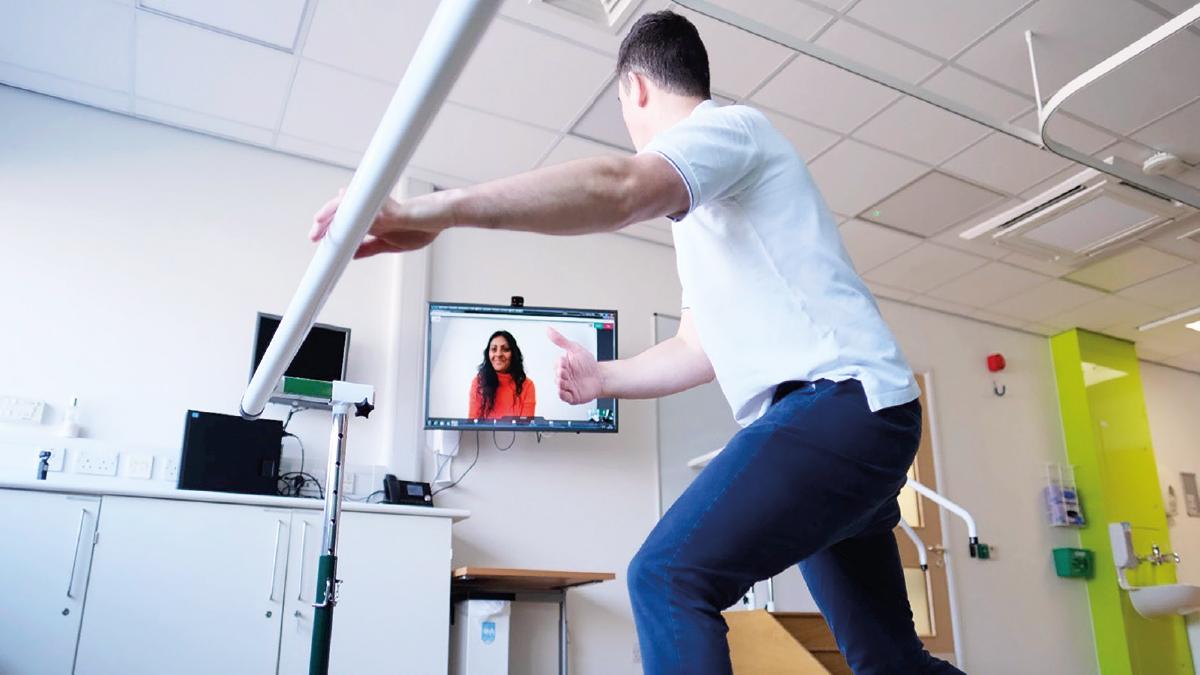CSP members share their advice and experience of using digital tools to provide physiotherapy services remotely during the pandemic

Their case studies highlight the challenges, solutions, and benefits of using different digital solutions.
Using patients’ preferred platform to deliver consultations in a MSK private practice
Helen Preston, clinical director of Prestons Health
What physio services do you provide?
We’re an independent healthcare provider in the Peterborough and Oundle area, with a range of different therapists and therapies addressing mainly MSK disorders. Our prime focus is on helping patients live well.
What tools are you using to deliver your physio services digitally?
It depends on the needs and preferences of each patient. So far we have delivered consultations using WhatsApp, FaceTime, Zoom, Skype, telephone and a paid-for platform called Coviu. We continue to innovate and try options that are patient-centred.
How have these services replaced face-to-face contact?
Prior to the Covid-19 pandemic, 99% of our appointments were face-to-face, but we had just started trialling video consultations. Our service is not changing, just the medium by which we deliver care. For people who aren’t confident with technology, we offer telephone consultations. We also offer a free 15-minute video chat so patients can try out the virtual experience before booking.
How has it been?
In general, the tools are really easy to use for both us and the patient. The most important factor so far has been the consistency and quality of the internet connection. The thing I’ve really noticed so far is that patients now seem more willing to embrace empowered healthcare than in face-to -face consultations. Because we cannot perform passive therapies such as manual therapy, acupuncture or electrotherapy, their expectations are different. They know this cannot be delivered via a virtual consultation and thus are appearing more open to creating their own agency around their condition.
We are evaluating each interaction after every consultation to gain valuable feedback we can act on afterwards.
Any top tips?
Don’t be afraid to try new things. I have been in awe of our patients and their willingness to embrace a new way of working. Allow plenty of time between appointments to allow for any tech issues during the consultation and therefore giving patients a real sense of value of their time with you. Maintain professionalism. I’ve been conscious to wear my usual uniform during consultations. Make sure the environment the patient can see looks as safe and welcoming as a treatment area.
Attend Anywhere: video consultation platform to deliver outpatient orthopaedic rehabilitation
Anthony Gilbert, physiotherapist at the Royal National Orthopaedic Hospital in Stanmore
What physio services do you provide?
Physio-wise, our department covers acute inpatients (elective orthopaedics, paediatric orthopaedic surgery, orthopaedic oncology, spinal cord injuries/orthopaedics) and many of these patients are followed up as outpatients. In addition, our outpatient services covers pain management programmes, hypermobility programmes, shoulder rehabilitation and amputees. Our patients can include those who are at any stage on a surgical pathway.
What tools are you using to deliver your physio services digitally?
We have previously used Skype to contact patients which worked well. We are currently rolling out Attend Anywhere across the hospital.
How have these services replaced face-to-face contact?
All of our clinicians have triaged their lists to determine who could safely be seen by either telephone or video call. Only post-operative/acute patients who need to be seen will be attending the hospital.
How has it been?
Generally speaking, our clinicians (across the trust, including medical, surgical, AHPs) have found the use of video call calls helpful. We developed a feedback form for clinicians and patients to fill out and so far (following the first 80 or so calls) satisfaction is approximately 80%. It has been helpful for our physios to demonstrate exercises to patients. Physios using phone calls often find themselves having to think about the language they use to explain what they want their patients to do. It requires a completely different skillset. It can be frustrating when patients are not able to get onto the system and there has been a huge amount of effort required by admin staff and support workers to provide patients with troubleshooting advice. We are ironing out these issues as we go.
Any top tips?
- NHS X have changed their guidance on virtual consultations for healthcare during the current climate.
- This excellent v-log by eGP learning captures some of the key considerations for clinicians new to this way of consulting with patients.
- Check out our resources for remote service delivery options – this is being updated regularly and is a fantastic resource.
MyCOPD - app to help people manage their condition
Laura Danvers, respiratory physiotherapist and team lead for the Bristol community health respiratory team.
What physio services do you provide?
The community respiratory team provides pulmonary rehabilitation, hospital at home and home oxygen service for patients within the Bristol area.
What tools are you using to deliver your physio services digitally?
Due to the Covid-19 situation, we have cancelled our pulmonary rehabilitation (PR) in line with national recommendations. As an alternative, we are offering all COPD patients referred and waiting for PR, the opportunity to register for MyCOPD. This is to enable patients to utilise the educational and exercise component while waiting for pulmonary rehabilitation to re-start.
How has it been?
Being able to offer patients an option while we are unable to offer our PR classes is invaluable. It has meant that patients feel they have something to use and are not just being left on a waiting list with no alternatives.
Number of subscribers: 1




































